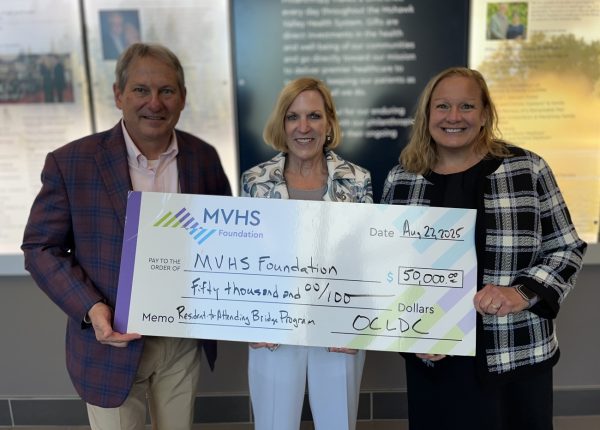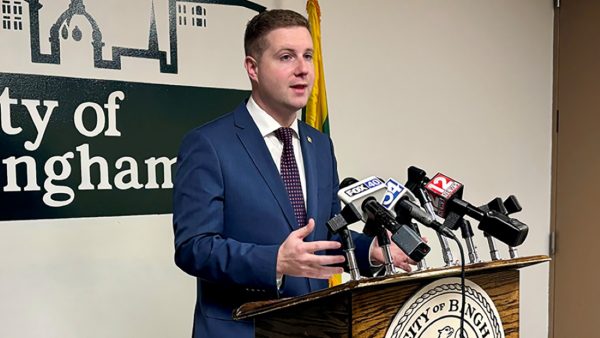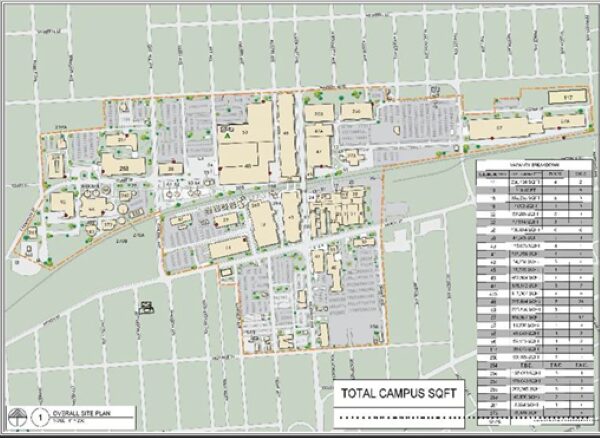Get our email updates
Stay up-to-date on the companies, people and issues that impact businesses in Syracuse, Central New York and beyond.
What's New
Upcoming Events
CNYBJ Job Board

MVHS, OCLDC announce $50,000 for physician-retention program
UTICA, N.Y. — Mohawk Valley Health System (MVHS) and the Oneida County Local Development Corporation (OCLDC) say they’re investing $50,000 in a new initiative aimed at strengthening physician retention in the Mohawk Valley region. The funding, which OCLDC approved, will support MVHS’s Resident-to-Attending Bridge program, a workforce-development effort designed to help final-year medical residents transition […]
Get Instant Access to This Article
Become a Central New York Business Journal subscriber and get immediate access to all of our subscriber-only content and much more.
- Critical Central New York business news and analysis updated daily.
- Immediate access to all subscriber-only content on our website.
- Get a year’s worth of the Print Edition of The Central New York Business Journal.
- Special Feature Publications such as the Book of Lists and Revitalize Greater Binghamton, Mohawk Valley, and Syracuse Magazines
Click here to purchase a paywall bypass link for this article.
UTICA, N.Y. — Mohawk Valley Health System (MVHS) and the Oneida County Local Development Corporation (OCLDC) say they’re investing $50,000 in a new initiative aimed at strengthening physician retention in the Mohawk Valley region.
The funding, which OCLDC approved, will support MVHS’s Resident-to-Attending Bridge program, a workforce-development effort designed to help final-year medical residents transition into long-term attending roles within the community, MVHS said.
The program includes structured mentorship, faculty development, board-preparation stipends, and relocation assistance for graduates who commit to staying in the region.
“This investment is a powerful endorsement of our shared commitment to building a sustainable healthcare workforce,” Darlene Stromstad, president and CEO of MVHS, said in the announcement. “We are deeply grateful to OCLDC for recognizing the importance of physician retention as a cornerstone of regional economic vitality.”
The initiative aligns with OCLDC’s mission to support workforce sectors “critical to Oneida County’s long-term stability and quality of life.” Health care remains one of the most important sectors in the region, and retaining trained physicians is key to ensuring continued access to high-quality care, MVHS contends.
MVHS welcomed 35 new resident physicians this summer across seven residency programs, including family medicine, general surgery, psychiatry and pharmacy. Of the 10 family-medicine graduates, six have committed to staying in the Mohawk Valley, with roles ranging from hospitalists to faculty members.
“This program is not just about retaining talent — it’s about investing in the future of our community,” Shawna Papale, executive director of OCLDC and Mohawk Valley EDGE, said. “We’re proud to partner with MVHS on this initiative and look forward to seeing its impact on both healthcare and economic development in our region.”
The $50,000 contribution from OCLDC builds on recent philanthropic momentum at MVHS, including a $100,000 gift from a former physician and a $50,000 grant from a corporate fund to enhance simulation training, the health system noted.

Ask the Expert: How Registered Apprenticeship Can Solve Employers’ Workforce Challenges
In today’s competitive labor market, employers face growing challenges: finding skilled workers, retaining top talent, and preparing for rapid technological change. Traditional hiring methods alone

Colgate University unveils Peter’s Glen landscape corridor
HAMILTON, N.Y. — Colgate University announced it has opened its new Peter’s Glen, a 2.5-acre landscape corridor made possible by the philanthropy of 1965 graduate

Syracuse University Chancellor Syverud to step down in June 2026
SYRACUSE, N.Y. — Syracuse University Chancellor Kent Syverud plans to step down as chancellor and president in June 2026, after 13 years in the job.

Rebranded Sapphire Recruitment moves to Syracuse Inner Harbor
SYRACUSE, N.Y. — Sapphire Recruitment, which was formerly known as CPS Recruitment, has moved to the building known as Iron Pier at 720 Van Rensselaer St. in Syracuse’s Inner Harbor area. It held a formal-opening event on Tuesday morning. The company had been operating at 904 7th North St. in the town of Salina. In
Get Instant Access to This Article
Become a Central New York Business Journal subscriber and get immediate access to all of our subscriber-only content and much more.
- Critical Central New York business news and analysis updated daily.
- Immediate access to all subscriber-only content on our website.
- Get a year’s worth of the Print Edition of The Central New York Business Journal.
- Special Feature Publications such as the Book of Lists and Revitalize Greater Binghamton, Mohawk Valley, and Syracuse Magazines
Click here to purchase a paywall bypass link for this article.
SYRACUSE, N.Y. — Sapphire Recruitment, which was formerly known as CPS Recruitment, has moved to the building known as Iron Pier at 720 Van Rensselaer St. in Syracuse’s Inner Harbor area.
It held a formal-opening event on Tuesday morning. The company had been operating at 904 7th North St. in the town of Salina.
In the firm’s announcement, Susan Crossett, CEO of Sapphire Recruitment, emphasizes that the rebrand goes beyond a name change.
“We’ve built a reputation on trust, adaptability, and deep local expertise,” Crossett said. “Sapphire Recruitment represents our forward-thinking approach and our commitment to being a true partner in the success of both employers and job seekers.”
Sapphire Recruitment also used its announcement to explain the rebrand, saying, “This rebrand represents a natural evolution — an opportunity to reinforce what has always set the company apart. Sapphire Recruitment is all about shaping futures for both industry and community at large. This transition allows us to build on our strengths, expand reach, and continue making meaningful connections between businesses and professionals.”
The new name “reflects the depth of their experience and the value of long-term partnerships. A sapphire takes millions of years to form, just like the relationships and expertise Sapphire Recruitment has built over the past 35 years,” per the Sapphire announcement.
In a separate announcement, COR Development Company sees the rebranded Sapphire’s move to the Syracuse Inner Harbor as “further establishing the area as a growing economic hub and premier destination for innovation and business growth.”
It joins a lineup of tenants that include Meier’s Creek Brewing Company, 315 Beauty Bar, Delmonico Insurance, and Café Blue.
Sapphire Recruitment is one of the largest independently owned, full-service staffing and recruitment firms in the Syracuse area and upstate New York. Established in 1989, the firm is a certified Women Owned Business (WBE).

New York SBDC presents awards to small businesses in Watertown, Camillus, and Oswego
The New York State Small Business Development Center (NY SBDC) on Friday presented statewide awards to businesses in Camillus, Oswego, and Watertown. The NY SBDC

Madison County awarded $10 million ConnectALL grant
WAMPSVILLE, N.Y. — Madison County will use a nearly $10 million grant to bring broadband Internet service to unserved residents in the southern part of

CenterState CEO names director of industry partnerships for construction
SYRACUSE, N.Y. — CenterState CEO recently appointed Danielle Szabo as director of industry partnerships for construction, a newly created position. In this role, Szabo is responsible for managing industry-focused workforce-development activities, especially within the construction industry. The goal is to help companies grow while creating career pathways for unemployed and underemployed Central New Yorkers, the
Get Instant Access to This Article
Become a Central New York Business Journal subscriber and get immediate access to all of our subscriber-only content and much more.
- Critical Central New York business news and analysis updated daily.
- Immediate access to all subscriber-only content on our website.
- Get a year’s worth of the Print Edition of The Central New York Business Journal.
- Special Feature Publications such as the Book of Lists and Revitalize Greater Binghamton, Mohawk Valley, and Syracuse Magazines
Click here to purchase a paywall bypass link for this article.
SYRACUSE, N.Y. — CenterState CEO recently appointed Danielle Szabo as director of industry partnerships for construction, a newly created position.
In this role, Szabo is responsible for managing industry-focused workforce-development activities, especially within the construction industry. The goal is to help companies grow while creating career pathways for unemployed and underemployed Central New Yorkers, the regional economic-development organization said in an announcement.
Szabo comes to CenterState CEO from Ithaca Area Economic Development, where she served as director of workforce innovation for the last three years, according to her LinkedIn profile. In that role, Szabo collaborated with employers, educational partners, and community-based organizations to address workforce needs of key sector businesses in Ithaca and Tompkins County. That included designing and implementing initiatives to improve career awareness and creating inclusive pathways and programs to support area employers.
In her new position at CenterState CEO, Szabo is also co-leading the Syracuse Build initiative and its replication in three counties while overseeing workforce-development strategies and employer engagement in advanced manufacturing and other high-tech industries.
Szabo has more than 17 years of experience in the nonprofit, workforce, and economic-development sectors with a focus on social justice and economic inclusion. That includes previously working at CenterState CEO as director of programming for its Work Train initiative from 2009-2019, per her LinkedIn page. Szabo also has previously worked at Cayuga Economic Development Agency.

Development work starts on new fire station on Binghamton’s north side
BINGHAMTON, N.Y. — Work is underway on a project to develop a new fire station on the north side of Binghamton. Built in 1960, the current north side fire station at 39 West State St. is nearing the end of its useful life, the office Binghamton Mayor Jared Kraham said. It’s estimated that repairs to
Get Instant Access to This Article
Become a Central New York Business Journal subscriber and get immediate access to all of our subscriber-only content and much more.
- Critical Central New York business news and analysis updated daily.
- Immediate access to all subscriber-only content on our website.
- Get a year’s worth of the Print Edition of The Central New York Business Journal.
- Special Feature Publications such as the Book of Lists and Revitalize Greater Binghamton, Mohawk Valley, and Syracuse Magazines
Click here to purchase a paywall bypass link for this article.
BINGHAMTON, N.Y. — Work is underway on a project to develop a new fire station on the north side of Binghamton.
Built in 1960, the current north side fire station at 39 West State St. is nearing the end of its useful life, the office Binghamton Mayor Jared Kraham said. It’s estimated that repairs to the building would cost millions of dollars.
“We’re advancing plans to create a neighborhood anchor and state-of-the-art public safety facility — the North Side deserves it,” Kraham said in the announcement. “With a multi-year approach, we’ll work to secure state and federal grants to ease the burden on Binghamton taxpayers. From new fire apparatus to facilities, this administration is steadfast in our support of first responders and the lifesaving work they do.”
Kraham first announced plans to build a new fire station to serve the city’s north side last fall in his 2025 budget address, his office noted.

Following a public request for qualifications process this past spring, the City of Binghamton hired CPL of Vestal to provide professional design services for the predevelopment portion of the north side fire-station project.
In June, Binghamton City Council authorized Kraham to enter into an agreement with CPL for predevelopment services, expected to cost $100,000. CPL will work with the Binghamton Fire Department and other city officials on building and site programming, site selection, and conceptual design of the new facility.
A task force from the fire department — including Chief Alan Gardiner, Assistant Chief Thomas Edwards, and Captain David Holleran — is helping the predevelopment team in studying emergency response time and call volume data to make a data-driven decision regarding the location of the new station, the City of Binghamton said.
The work will also support the city in preparing competitive grant applications to fund the final design and construction of the new station, per the announcement.

The Agency to develop a master plan for the Huron campus in Endicott
ENDICOTT, N.Y. — The Agency on Thursday announced the development of a master facilities plan to guide the “modernization and revitalization” of the Huron campus
Get our email updates
Stay up-to-date on the companies, people and issues that impact businesses in Syracuse, Central New York and beyond.
